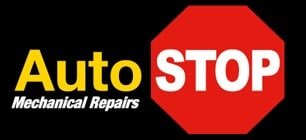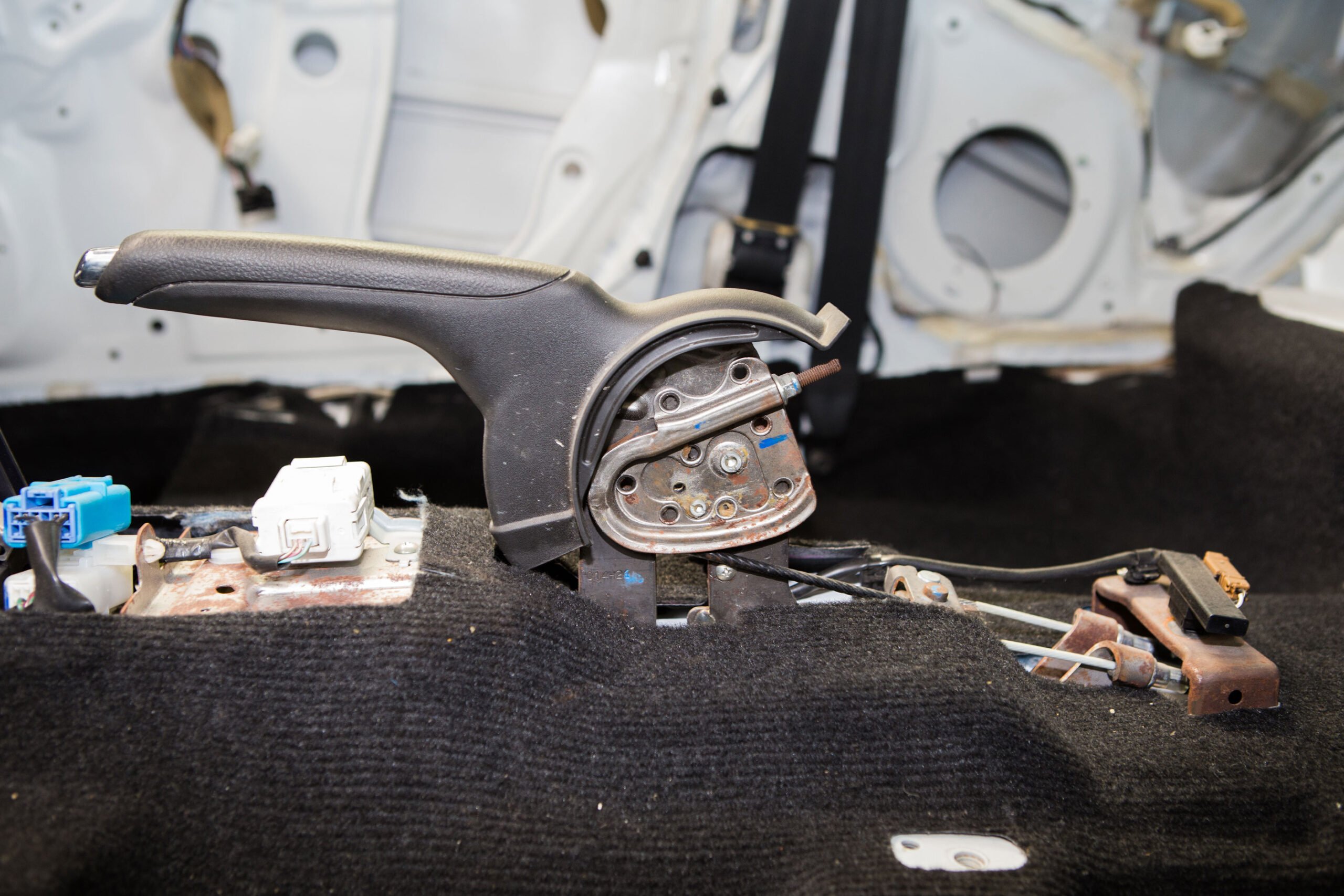
Handbrake Repair Cost Explained
A Complete Guide To Handbrake Repair Costs
The handbrake, also commonly referred to as the ‘parking brake’ or ’emergency brake’, plays a critical role in vehicle safety and not just by keeping a vehicle stationary when parked. An integral component of the car’s braking system, the handbrake is designed to operate independently of the car’s main hydraulic brake system, providing a failsafe in the event of a primary brake failure or when the vehicle is at a standstill on an incline.
Despite its importance, the handbrake is often overlooked until issues arise. Timely repairs and regular maintenance of the handbrake system are paramount, not only for the safety of the driver and passengers but also to prevent potential damage to the vehicle’s transmission and braking system. Ignoring problems with your handbrake can be risky, as it could cause your car to roll away if parked on a hill or fail to stop in an emergency if there’s a brake system failure. This could happen due to leaking brake lines or worn-out brake discs or drums that reduce the ability to stop the wheels.
Understanding the importance of the handbrake and recognising the signs of its wear and tear is key for timely repairs, ensuring the vehicle remains safe and compliant with Australian road safety standards. Here’s a detailed exploration of handbrake repair costs, which includes the various factors that affect pricing and offers preventive maintenance tips to avoid future issues.

Handbrake Mechanism And Function:
The handbrake, a vital safety feature within every vehicle, is engineered to keep your car stationary, especially on inclines and serves as an essential backup to the primary braking system. Unlike the main brakes that are hydraulic, the handbrake operates mechanically through a series of cables that apply pressure to the vehicle’s rear brake pads or shoes, effectively immobilising the car. This mechanical nature ensures that the handbrake remains functional even if there is a failure in the hydraulic brake system, offering an additional layer of safety.
Types Of Handbrakes:
Handbrakes have evolved significantly over time, transitioning from the traditional lever to more modern systems:
Traditional Lever Type:
Found in older vehicles (pre 2001), this type operates through a hand-pulled lever, usually located between the front seats, which, when pulled, tightens the cable connected to the rear brakes. Fun fact: The BMW 7 Series pioneered the ‘electric handbrake’ in 2001 which set the benchmark for other manufacturers to drop the traditional lever type handbrake and follow suit for future models.
Button Type:
A push-button handbrake, often found in newer vehicle models (post 2016), eliminates the physical exertion needed for the lever type. By simply pressing a button, the driver engages the handbrake, which electronically operates the rear brakes.
Electronic Systems:
The most advanced form, electronic handbrakes automatically engage and disengage with the touch of a switch or a button. These systems offer additional features such as automatic release when the car accelerates or hill-hold assistance, further simplifying the driving process and enhancing safety.
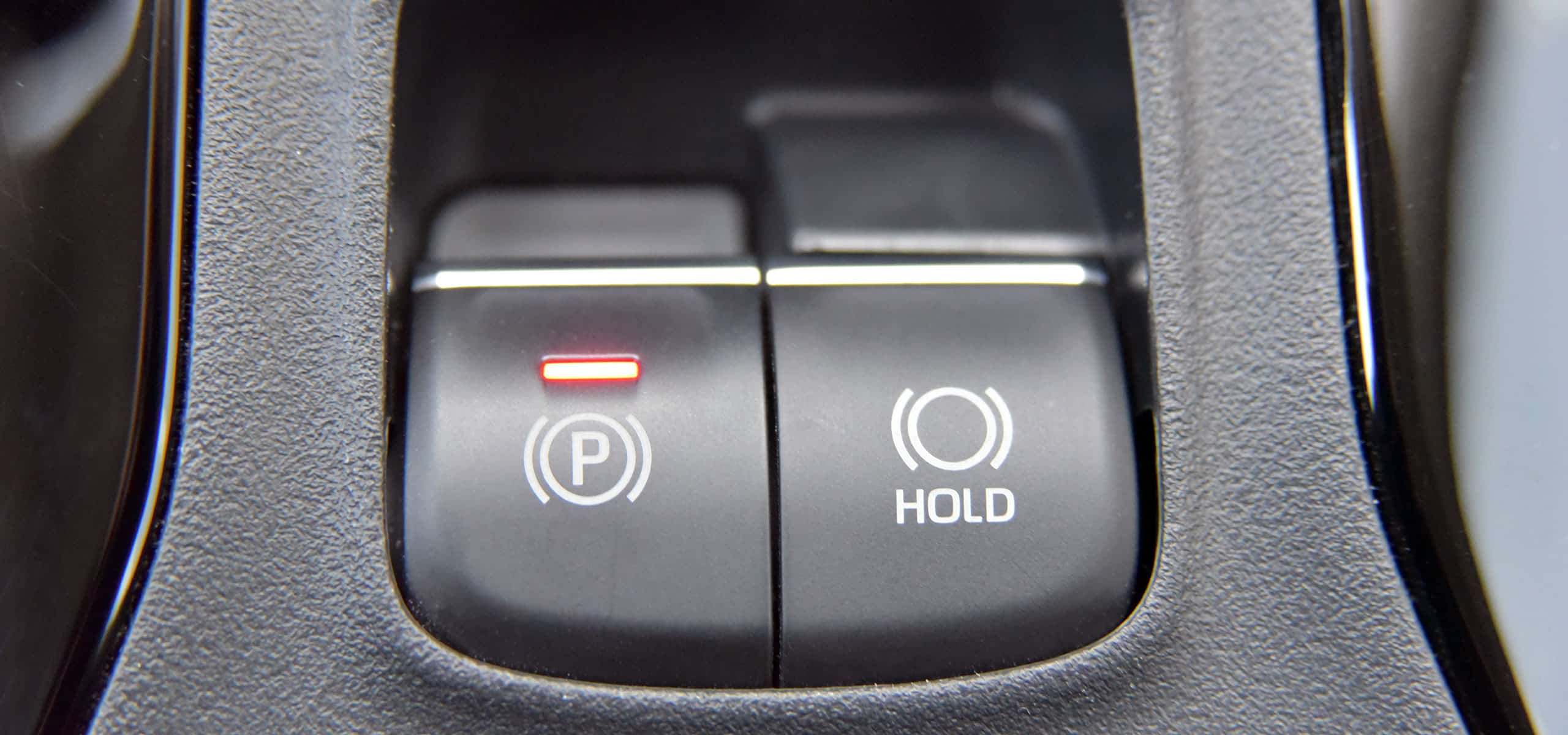
Common Problems And Signs Of Handbrake Failure
Handbrake issues can vary from simple adjustments to complete system overhauls. Common problems include:
Inability To Hold The Car Stationary: The most obvious sign of handbrake failure is when the car starts to slip or roll when parked on an incline, indicating worn-out brake pads or a stretched cable.
Warning Lights: Many modern vehicles are equipped with warning systems. A dashboard warning light specifically for the handbrake is a direct signal that there is a potential issue within the system.
Difficulty In Engagement Or Release: If the handbrake lever or button requires more force than usual to engage or if it becomes stuck in the engaged position, this could indicate a problem with the cable tension, alignment, or electronic system.
Recognising these signs early and addressing handbrake issues promptly can prevent further damage and ensure your vehicle remains safe and reliable on the road.
Average Handbrake Repair Costs
Understanding the costs associated with handbrake repairs is crucial for vehicle owners, especially when budgeting for maintenance or addressing sudden brake issues. In Australia, handbrake repair costs can vary widely based on several factors, including the type of vehicle, the nature of the repair and the choice of service provider.
Breakdown Of Average Costs For Different Types Of Vehicles And Repairs
Handbrake repairs can range from adjusting the handbrake for optimal performance, which is generally less expensive, to replacing worn or broken components like cables, shoes or calipers. The standard cost of handbrake repairs can differ significantly depending on the vehicle make and model. For standard passenger cars, for handbrake adjustment for example, these typically start from AUD$100. For larger vehicles, such as SUVs and trucks, costs may increase due to the more complex brake systems and the higher price of parts. Approximate pricing of different repairs are detailed below:
| Handbrake Repair Service | Cost ($AUD) |
| Handbrake Adjustment | From $100 |
| Handbrake Cable Replacement | From $300 |
| Handbrake Lever Replacement | From $300 |
| Handbrake Shoes Replacement | From $600 |
| Handbrake Button Replacement | From $250 |
| Handbrake Electric Motor Repair / Replacement | From $750 |
| Handbrake Caliper Replacement | From $650 – $2000 per caliper |
Comparison Costs Between Doing It Yourself (DIY) vs Professional Repair
For those with mechanical expertise, DIY handbrake repairs can potentially reduce costs substantially, due to labour costs alone. However, the benefits of DIY repair need to be weighed against the risks. Incorrect repairs can lead to brake failure, posing serious safety risks and potentially leading to more expensive repairs down the line. If you have never worked with automotive brakes before, seeking professional assistance could save time, money and the potential for potential error.
How Prices May Vary Between Different Service Providers
The cost of handbrake repairs can vary based on the service provider chosen. Dealerships offer parts and service guaranteed by the manufacturer, while independent garages and automotive service centers may provide different advantages. Mobile mechanics and specialist brake services also offer various benefits and conveniences.
Regardless of the choice, the quality of parts and the expertise of the mechanic are crucial for effective and lasting repairs. It’s recommended to research and gather multiple quotes, as well as checking reviews, before making a decision.
Diagnosing Handbrake Problems
Identifying handbrake issues early can prevent more severe problems down the line, ensuring your safety and other road users while also potentially saving you from costly repairs. Here’s how to recognise handbrake issues, conduct basic diagnostics yourself and understand when it is time to seek professional help.

How to Recognise Handbrake Issues
Several signs can indicate a failing handbrake. If your handbrake is working correctly, it should securely hold your vehicle stationary on an incline. Here are common symptoms of handbrake problems:
Inadequate resistance or too much slack: The handbrake lever should have a certain amount of resistance when you pull it up. If it comes up too easily or needs to be pulled up much higher than usual, there might be an issue.
Car moves when parked on a slope: If your vehicle rolls forward or backward when parked on an incline with the handbrake engaged, this is a clear sign of a problem.
Warning lights: Many modern vehicles have a dashboard warning light indicating issues with the braking system, including the handbrake.
Strange noises: Listen for any unusual sounds when you engage or release the handbrake. Squealing, clicking, or grinding noises can indicate that parts are worn out or not engaging properly.
Sticking or jamming: If your handbrake lever is difficult to release or feels stuck, there may be a problem with the cable or mechanism.
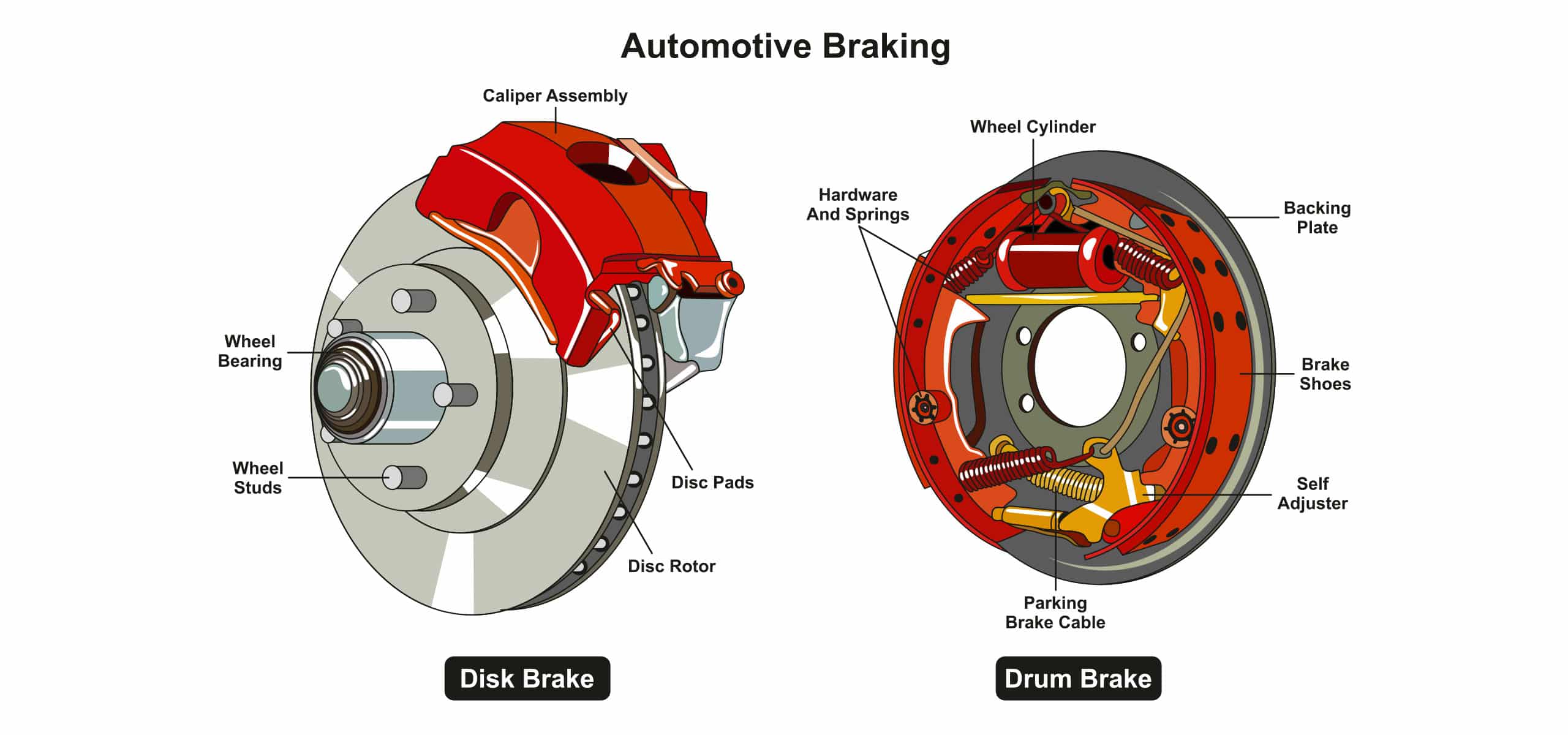
DIY Diagnostic Tips
For those who feel comfortable checking over their vehicle, here are some DIY tips for diagnosing handbrake issues:
Check the handbrake lever: See if there is excessive slack or resistance. This can often be adjusted, but excessive slack may indicate a worn cable.
Inspect the handbrake cable: If possible, inspect the cable underneath the vehicle for signs of wear, fraying or corrosion. Ensure the cable moves freely when the handbrake is engaged and released.
Look at the wheels: For drum brakes, remove the rear wheels and inspect the handbrake mechanism inside the drum. Ensure that everything moves freely and there are no worn components.
Check for corrosion: In areas with harsh weather conditions, cables and mechanisms can become corroded over time. Look for any signs of rust or corrosion.
When to Seek Professional Help
While basic checks can be performed at home, diagnosing handbrake issues can sometimes require specialised knowledge and tools. Here are situations when you should definitely seek professional assistance:
If you’re unsure: If you have any doubts about your ability to diagnose or fix the problem safely, it is always best to consult with a professional.
Complex mechanisms: If your vehicle has an electronic handbrake system, professional diagnostic tools may be required to identify the issue accurately.
Severe wear or damage: If there is significant wear or damage to the handbrake mechanism or cable, it’s safer and more efficient to get it repaired by a qualified mechanic.
After DIY adjustments: If you’ve attempted to adjust the handbrake yourself and the problem persists, or if the vehicle still doesn’t remain stationary on a slope, it’s time to get professional help.
Early diagnosis and professional repairs can extend the life of your handbrake system and ensure your safety on the road. When it comes to brake-related issues, erring on the side of caution is always advisable.
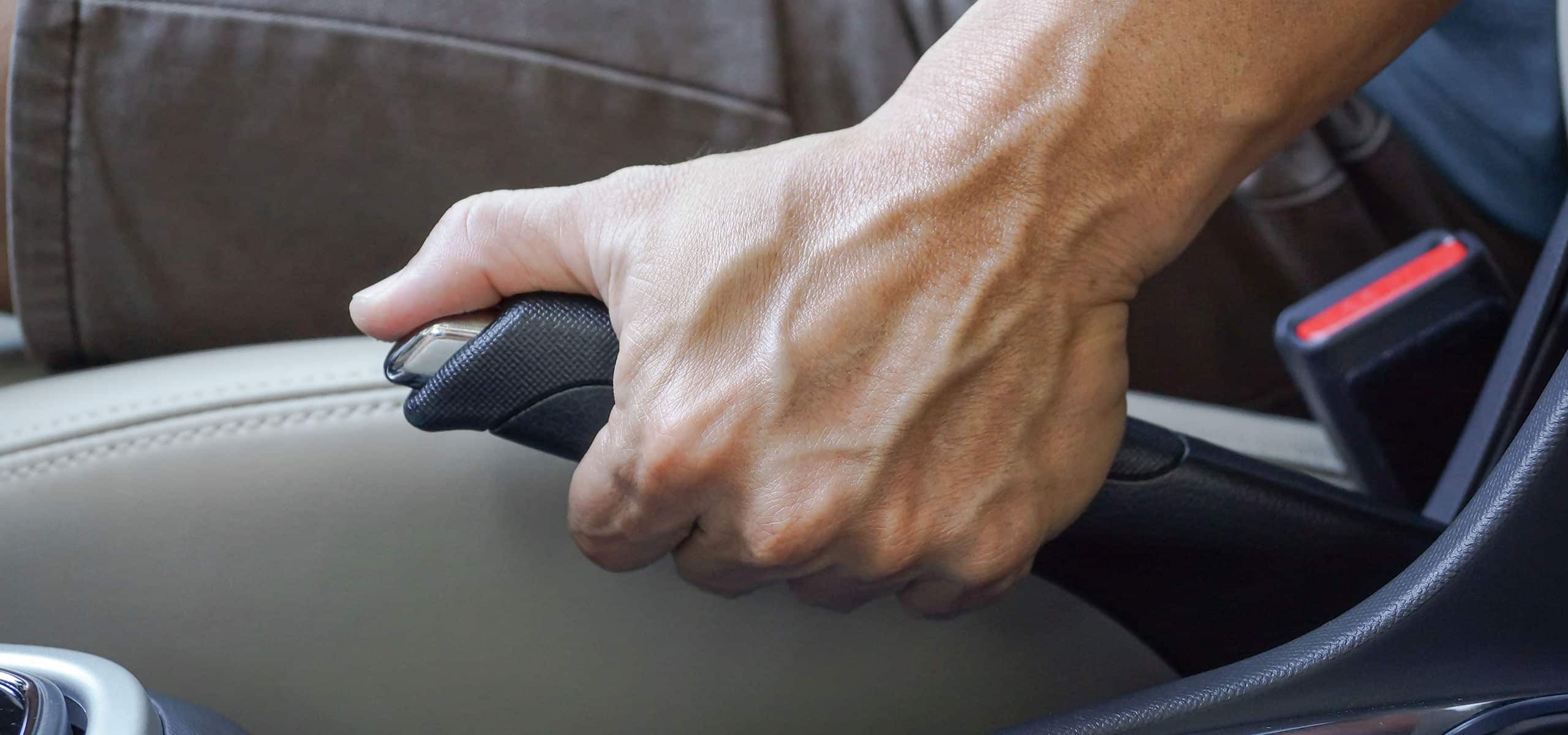
Reducing Handbrake Repair Costs
Minimising the cost of handbrake repairs doesn’t just involve finding the cheapest service provider; it also means taking proactive steps to prevent problems before they arise. By focusing on preventive maintenance including, conducting regular inspections and understanding the role of warranties and insurance, you can significantly reduce the likelihood of expensive repairs.
Preventive Maintenance Tips
Preventive maintenance is key to extending the life of your handbrake and avoiding costly repairs:
Use the handbrake regularly: Regular use can prevent the handbrake cable from seizing, especially in vehicles that are not driven frequently.
Avoid excessive force: Pulling the handbrake lever too hard can stretch or snap the cable. Apply sufficient force to secure the vehicle, but don’t yank the lever.
Keep the handbrake off when not in use: If your vehicle will be stationary for an extended period, such as during storage, leave the handbrake off and use wheel chocks to prevent it from rolling. This can prevent the handbrake from becoming stuck or seized.
Lubricate moving parts: Ensure that all moving parts of the handbrake system, especially cables and calipers, are adequately lubricated to prevent rust and corrosion.
How Regular Inspections Can Save Money in the Long Term
Regular inspections can truly help identify potential handbrake issues before they become severe for the following reasons:
Regular servicing: Include the handbrake system in your vehicle’s regular servicing checks. Mechanics can spot early signs of wear or damage that you might miss.
Self-inspections: In between professional services, perform basic checks yourself, such as monitoring the handbrake’s effectiveness and looking out for any potential warning signs.
Address issues promptly: If an inspection reveals a problem, address it immediately. Minor repairs can turn into major expenses if ignored.
The Role of Warranty and Insurance in Covering Repair Costs
Understanding the role of warranty and insurance can also help manage repair costs:
Warranty: New vehicles, and some used vehicles, come with a warranty that may cover handbrake repairs. You will need to check your vehicle’s warranty terms to see if handbrake issues are covered and the timeframe. Some warranties are one year and some up to three years.
Extended warranties: If your car is out of warranty, consider purchasing an extended warranty. This can provide peace of mind and cover unexpected repairs, including to the handbrake system.
Insurance: While standard auto insurance policies typically don’t cover wear and tear on handbrakes, some comprehensive policies might cover damages resulting from an accident where a faulty handbrake was a contributing factor. Review your policy or speak with your insurance provider for details.
By adopting preventive maintenance practices, conducting regular inspections, and making informed decisions about warranty and insurance, you can significantly reduce the likelihood of facing steep handbrake repair bills. Keeping your handbrake in good working order not only saves money but also ensures your vehicle remains safe and reliable on the road.
Choosing The Right Service For Handbrake Repair
Selecting the right service provider for handbrake repairs is crucial to ensure quality work, fair pricing and the longevity of your repairs. Knowing what to look for in a repair service, the importance of certified mechanics, and the right questions to ask can make a huge difference in the outcome of your handbrake repair.
What To Look For In A Repair Service
When choosing a service provider for your handbrake repair, consider the following factors:
Reputation: Look for service centres with positive reviews and recommendations from previous customers. Online reviews, testimonials and feedback from friends or family can provide insight into the quality as well as reliability of the service.
Experience: Choose a service that has extensive experience with your type of vehicle or handbrake system. Specialised knowledge can be invaluable if it means more accurate diagnostics and effective repairs.
Transparency: A reputable service provider should be transparent about their diagnostic findings, repair recommendations, and pricing. They should provide a detailed quote before beginning any work and explain the necessity and function of each repair.
Warranty: Check if the service offers a warranty on their repairs. A warranty can provide peace of mind and protection against future issues with the handbrake.
The Importance of Certified Mechanics for Specific Vehicle Types
Vehicles, especially modern ones, can have complex handbrake systems that require specific knowledge and tools to repair:
Certification: Look for mechanics who are certified to work on your vehicle’s make and model as they will have undergone specialised training and are more likely to understand the intricacies of your vehicle’s handbrake system.
Specialisation: Some vehicles, particularly luxury cars or those with electronic handbrake systems, may require specialist knowledge. In that situation, it is best to choose a service provider who specialises in your vehicle’s brand or type.
Equipment: Ensure that the service centre has the right tools and diagnostic equipment to accurately assess and fix your handbrake issues. Proper equipment is crucial for precise repairs, especially for electronic systems.
Questions to Ask Your Service Provider
Asking the right questions can help you gauge the reliability and expertise of the service provider:
What is the exact issue with my handbrake? Understanding the problem can help you verify the necessity of recommended repairs.
What repair options are available? A good service provider should be able to explain different repair options and their respective costs.
How long will the handbrake repairs take? Knowing the timeline can help you plan accordingly.
Is there a warranty on the handbrake repairs? A warranty can provide assurance on the quality of the work.
Can you provide references or examples of similar repairs done in the past? This can help you assess their experience and effectiveness in handling handbrake issues.
Choosing the right service provider is essential for effective handbrake repairs. By doing your research, asking the right questions, and selecting a service based on experience, reputation, and certification, you can ensure that your handbrake repairs are carried out professionally and efficiently.
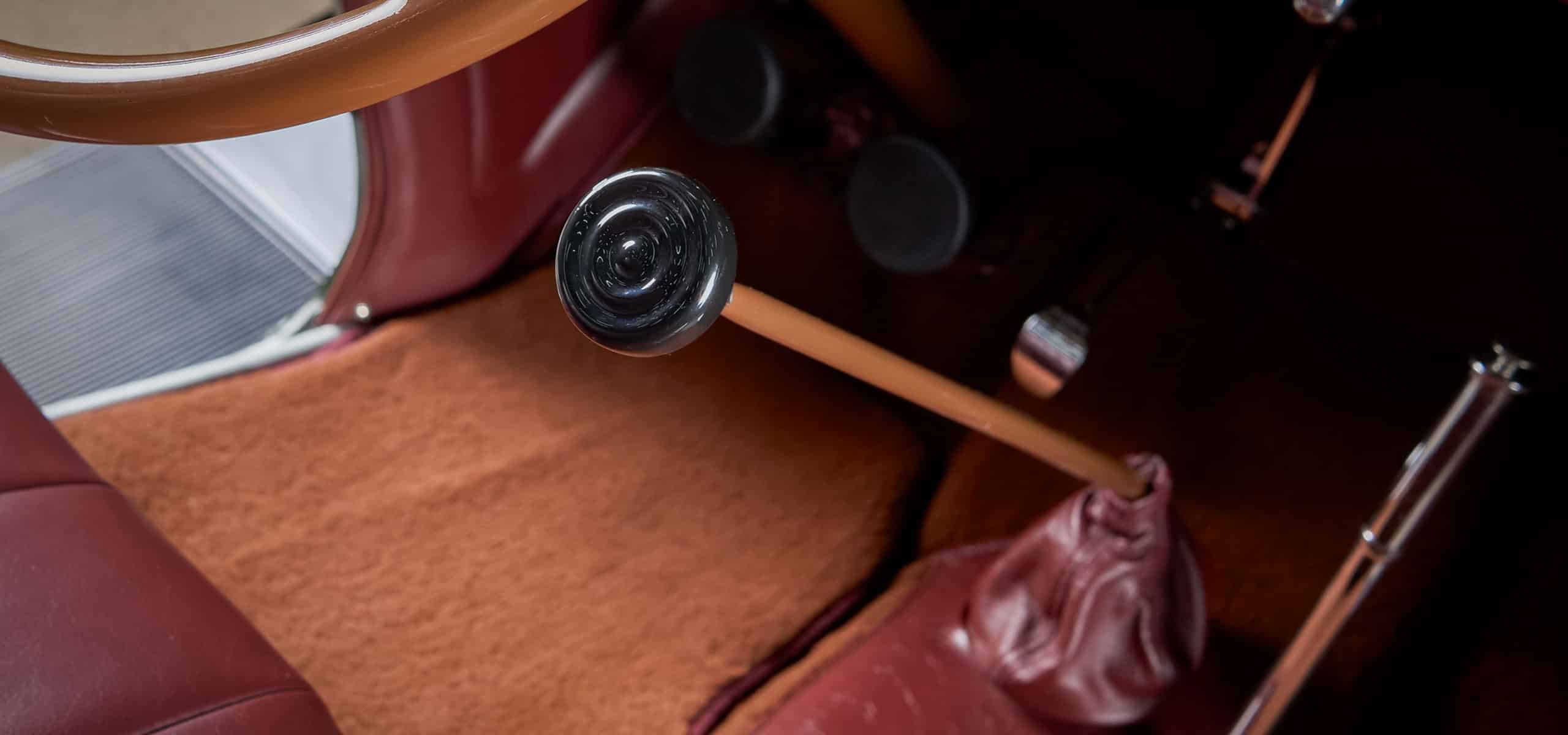
Frequently Asked Handbrake Repair Questions (FAQs)
Below are some frequently asked questions related to handbrake repair and costs, providing quick answers to common concerns and queries vehicle owners might have.
Q1: How often should my handbrake be inspected?
A1: It is advisable to have your handbrake checked at least once a year as part of your vehicle’s regular maintenance schedule. However, if you notice any issues or changes in its performance at any time, you should have it inspected immediately.
Q2: Can I drive my car if the handbrake is malfunctioning?
A2: Driving with a malfunctioning handbrake is not recommended as it can be unsafe, especially in emergencies or when parking on an hill. If your handbrake is not functioning correctly, it is best to have it repaired as soon as possible.
Q3: How much does it typically cost to repair a handbrake in Australia?
A3: The cost can vary significantly based on the type of repair, vehicle model and service provider. On average, handbrake repairs can range from AUD$100 to AUD$400. For an accurate estimate, it’s best to consult with a service provider.
Q4: Can I repair the handbrake myself to save money?
A4: While minor adjustments might be manageable for those with mechanical experience, handbrake repairs often require professional skills and tools, especially for modern vehicles with electronic systems. DIY repairs can lead to further damage or safety risks if not done correctly.
Q5: Why can handbrake repair cost vary so much?
A5: The cost can vary due to several factors, including the type of handbrake system, the extent of the damage, the cost of parts and labour. Also prices can differ between the provider you choose.
Q6: What are the signs that my handbrake needs repairing?
A6: Common signs include the handbrake feeling too loose or tight, the car rolling when parked on an incline, strange noises when engaging the handbrake, and warning lights on the dashboard.
Q7: Does using the handbrake regularly wear it down faster?
A7: Regular use of the handbrake is actually beneficial as it helps keep the mechanism in good working order. However, excessive force or improper use can lead to premature wear.
Q8: Are handbrake repairs covered under car insurance or warranties?
A8: Standard car insurance policies typically do not cover handbrake repairs as they are considered part of routine maintenance. However, if the handbrake issue is due to an accident, it might be covered. It is best to check your vehicle’s warranty as it may cover certain handbrake repairs, depending on the terms and conditions.
If you have any other questions not covered here, it’s always best to consult with a professional mechanic or your service provider for the most accurate information and advice.
The Verdict On The True Cost Of Handbrake Repairs
The handbrake is an essential component of your vehicle’s safety system, often overlooked until a problem arises. It is not just a convenience feature for parking; it serves as a critical backup in case of main brake system failure and ensures that your vehicle remains stationary when parked, especially on an incline or hill. Therefore, maintaining a fully functional handbrake is not only vital for your safety but also a legal compliance issue that can prevent accidents and fines.
Regular checks and maintenance of your handbrake can identify and resolve minor issues before they escalate into major problems. Ignoring handbrake issues not only compromises your safety and those around you but can also lead to more significant, costly repairs in the future. The cost of prevention is always less than the cost of repair, especially when it comes to components as crucial as your vehicle’s braking system.
We encourage all drivers to be proactive about handbrake maintenance and act promptly at the first sign of trouble. Whether it’s a routine check-up, a slight adjustment, or a full repair, ensuring your handbrake is in top condition is a sensible and wise choice for your safety and peace of mind. At the end of the day, the true cost of handbrake repair comes down to your budget and how much you are willing to spend on having a safe vehicle on the road. Safety should never be compromised.
Auto Stop are professionals in handbrake repairs and we have a service in both Brisbane and Gold Coast. Contact us for any handbrake repair enquiries you may have, we’re here to help.


